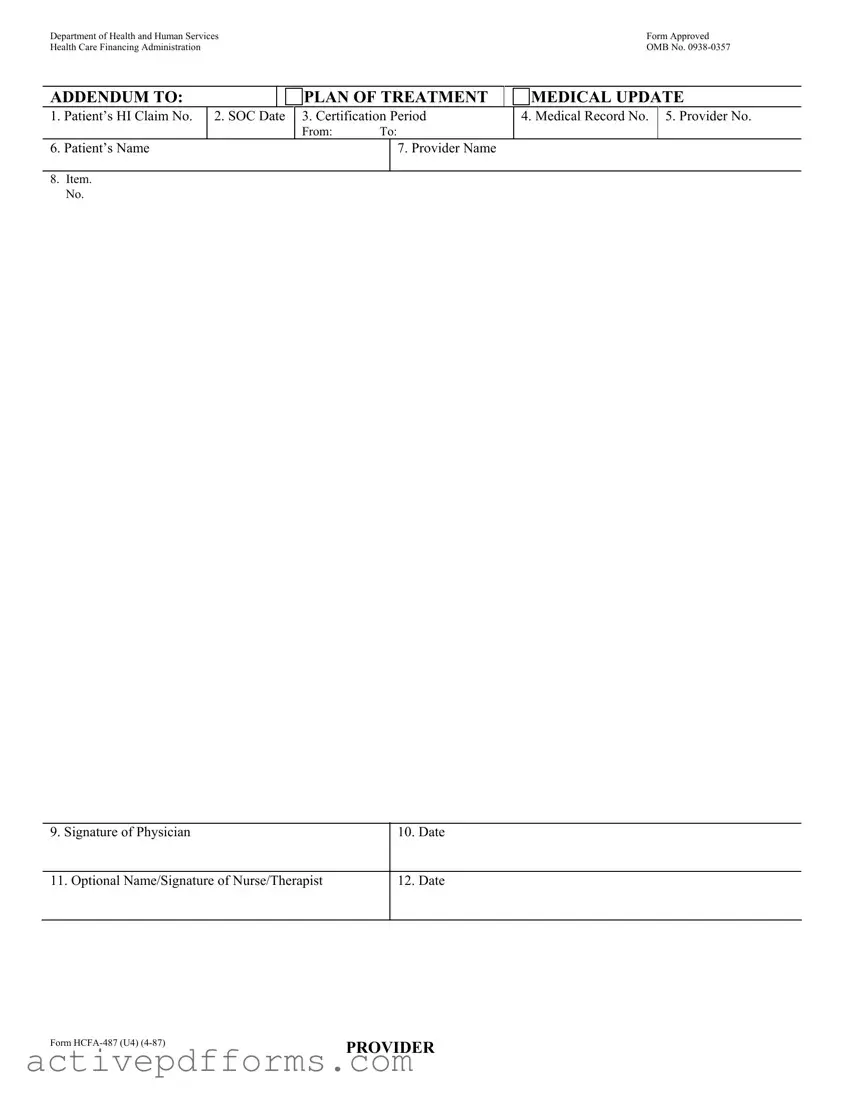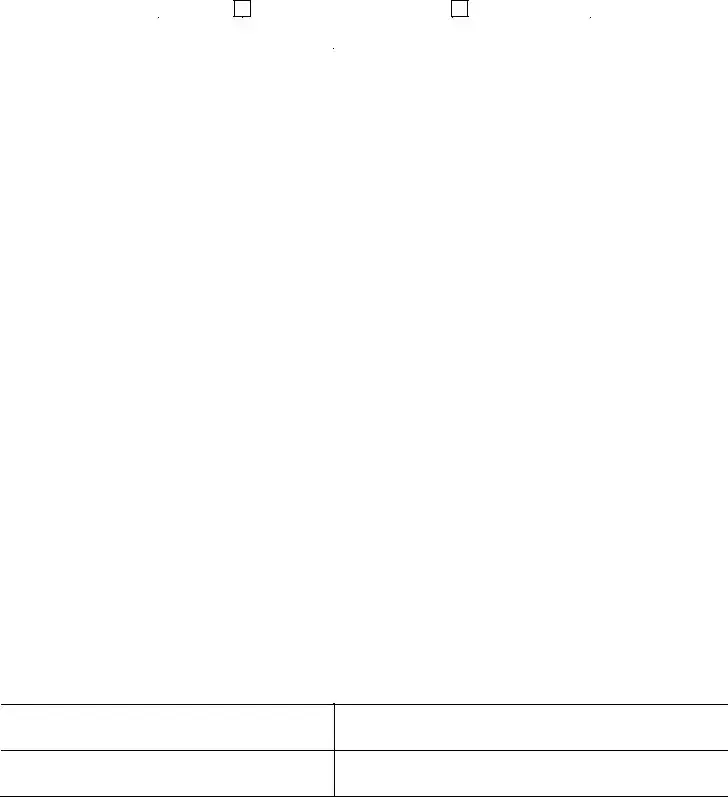In the complex and highly regulated field of healthcare, the documentation and forms that guide patient care and provider reimbursement are central to maintaining both quality and compliance. Among these numerous documents, the HCFA-487 form plays a critical role, yet it remains relatively unknown outside of professional circles. Approved by the Department of Health and Human Services and managed by the Health Care Financing Administration, this form, with its official designation as OMB No. 0938-0357, functions as an Addendum to the Plan of Treatment and Medical Update. It meticulously captures a range of essential information, from the patient's Health Insurance Claim Number (HI Claim No.) and Start of Care (SOC) date to the broader certification period during which medical services are provided. The form further details the medical record and provider numbers, alongside patient and provider names, thereby ensuring a comprehensive snapshot of the treatment framework. Item numbers facilitate detailed entries, while signature sections for the physician—and optionally, a nurse or therapist—underscore the collaborative nature of patient care, rounding off the form's utility in bridging the gap between clinical intentions and administrative necessities.

